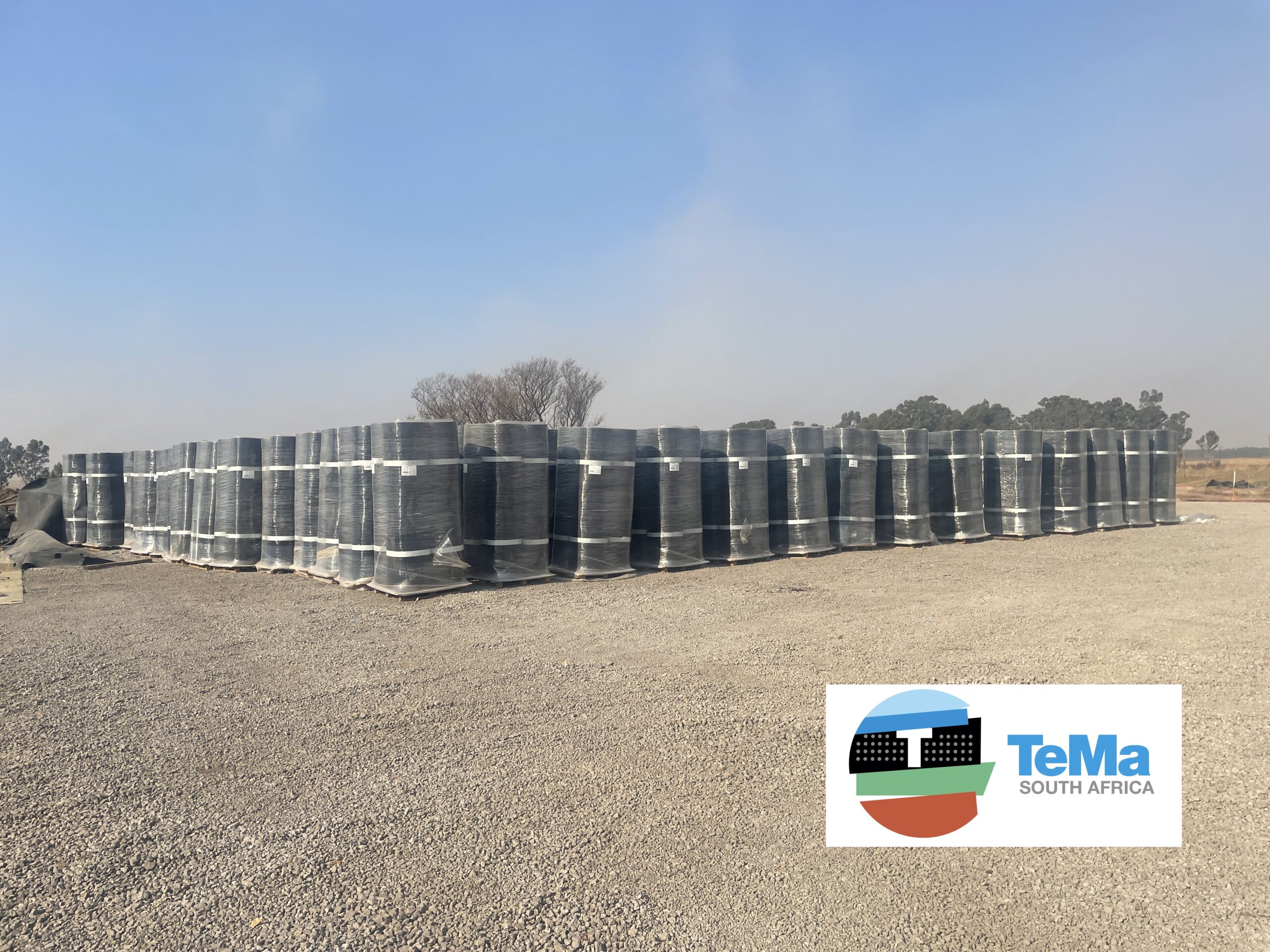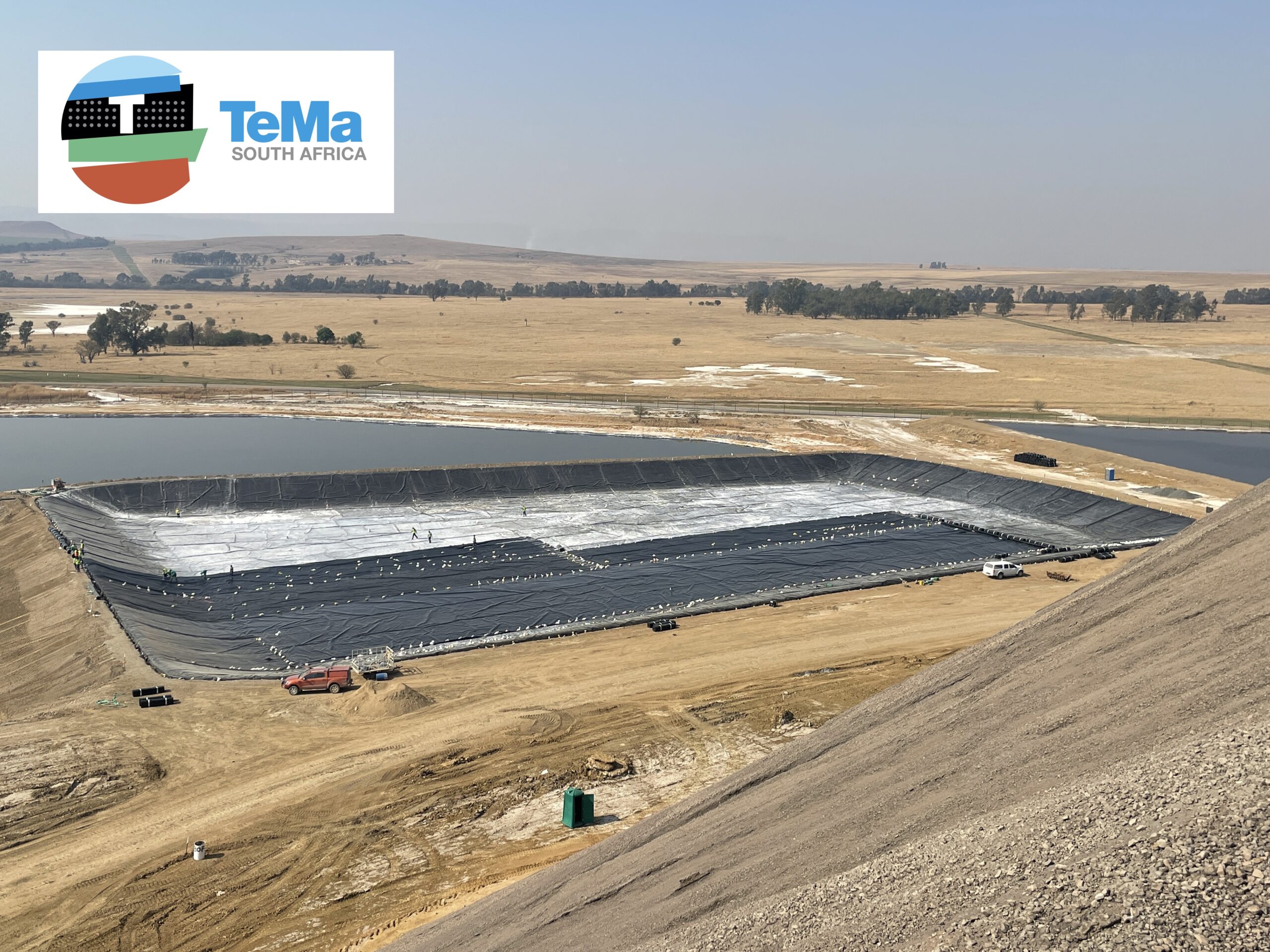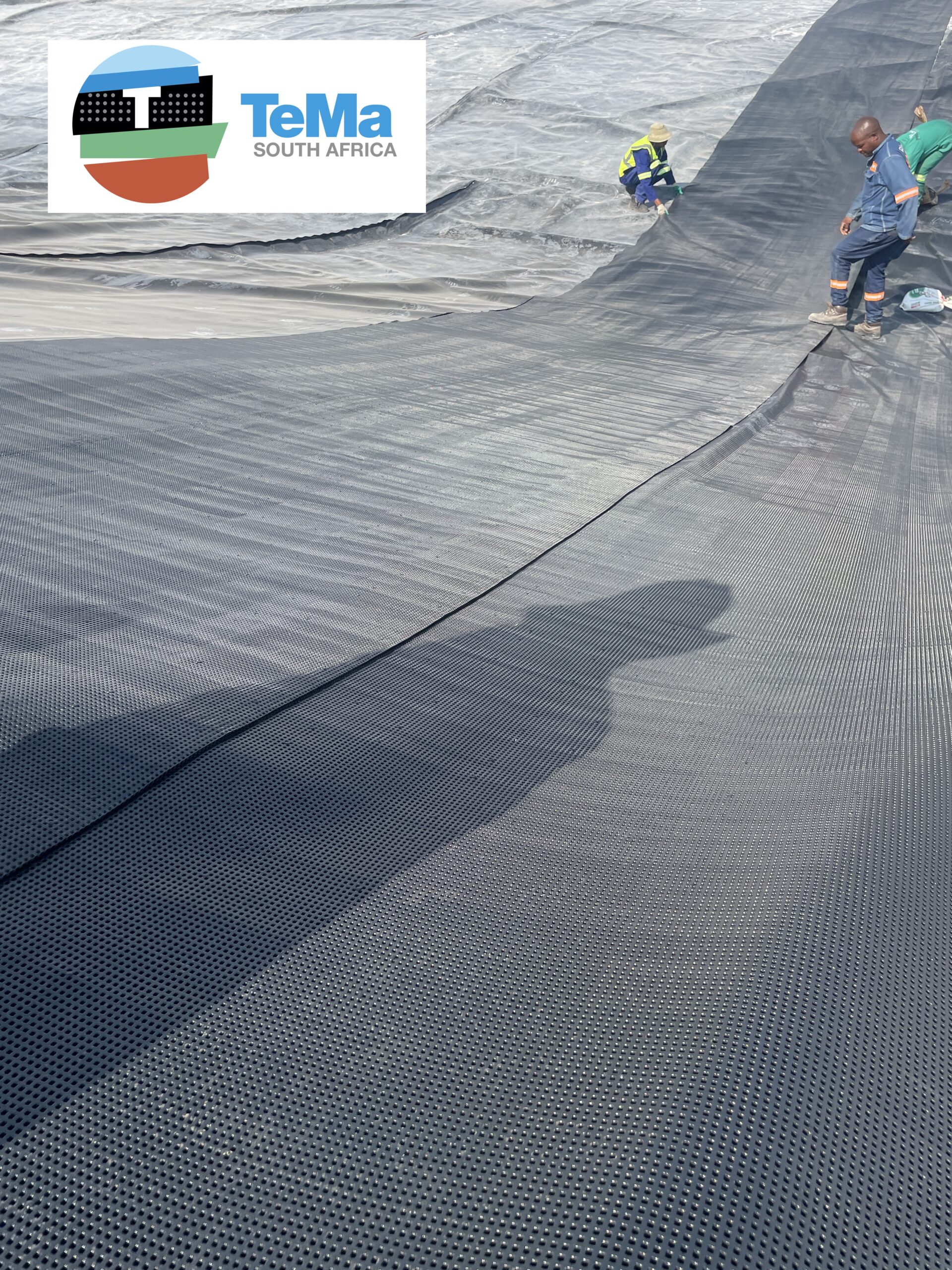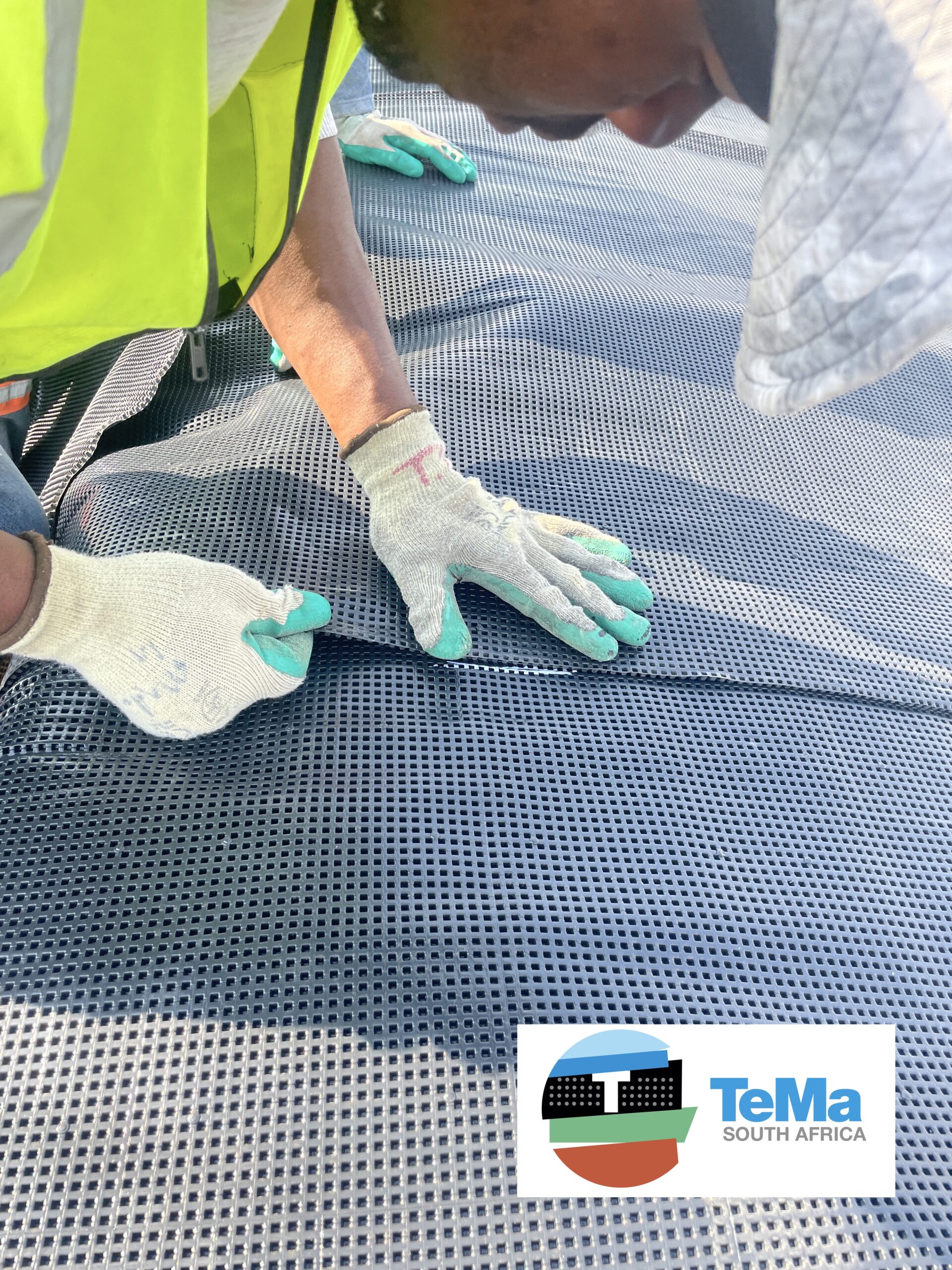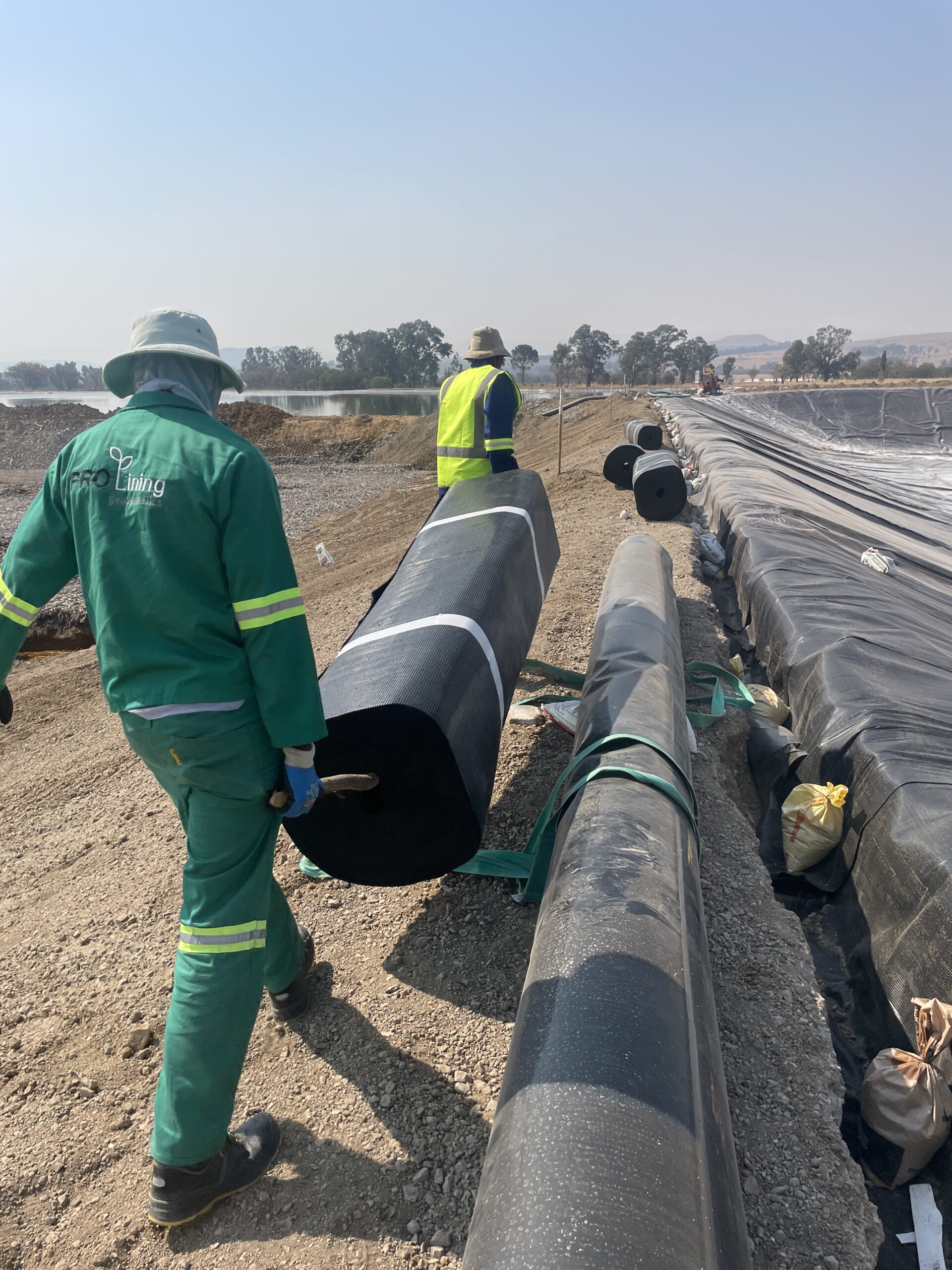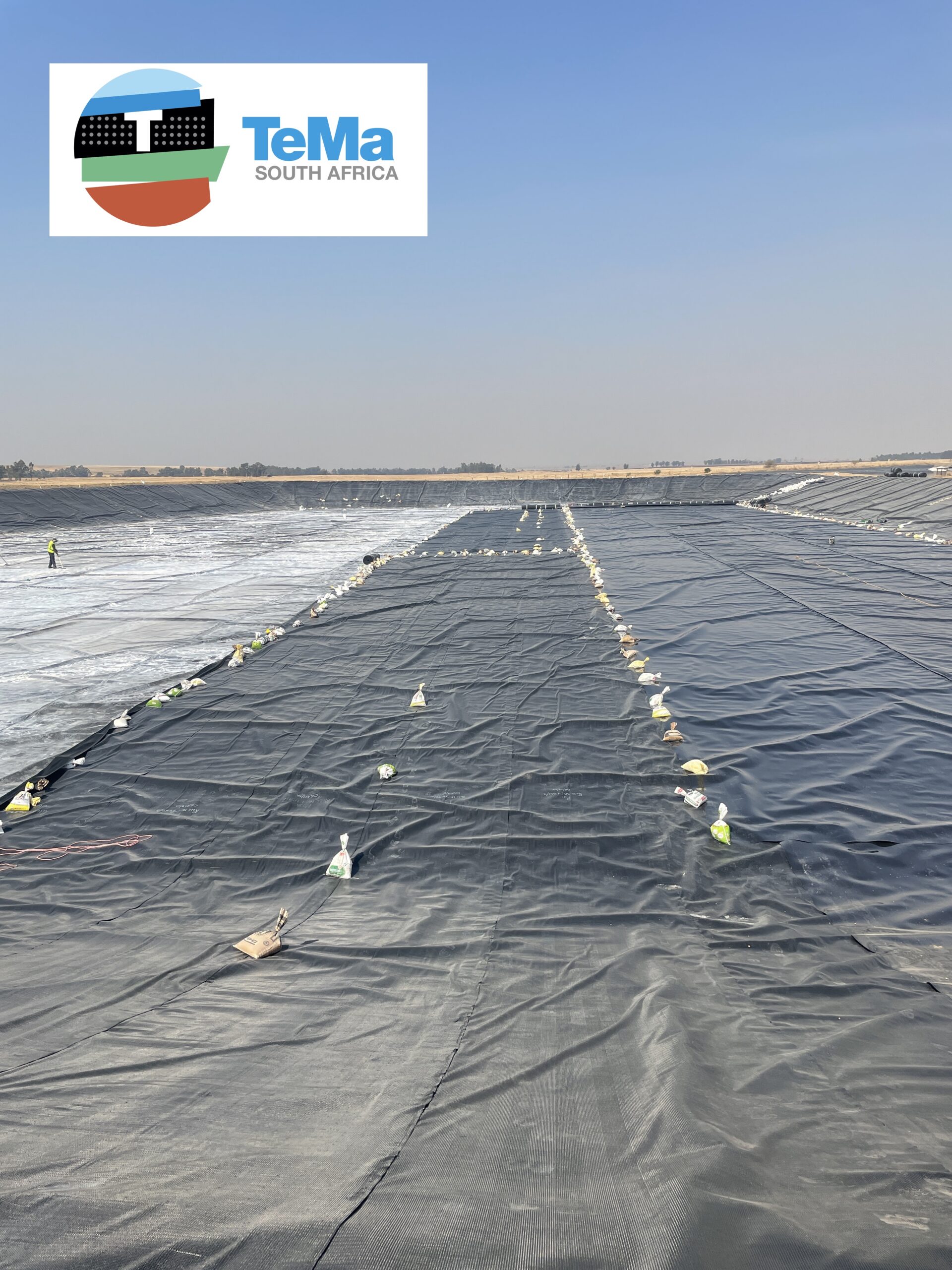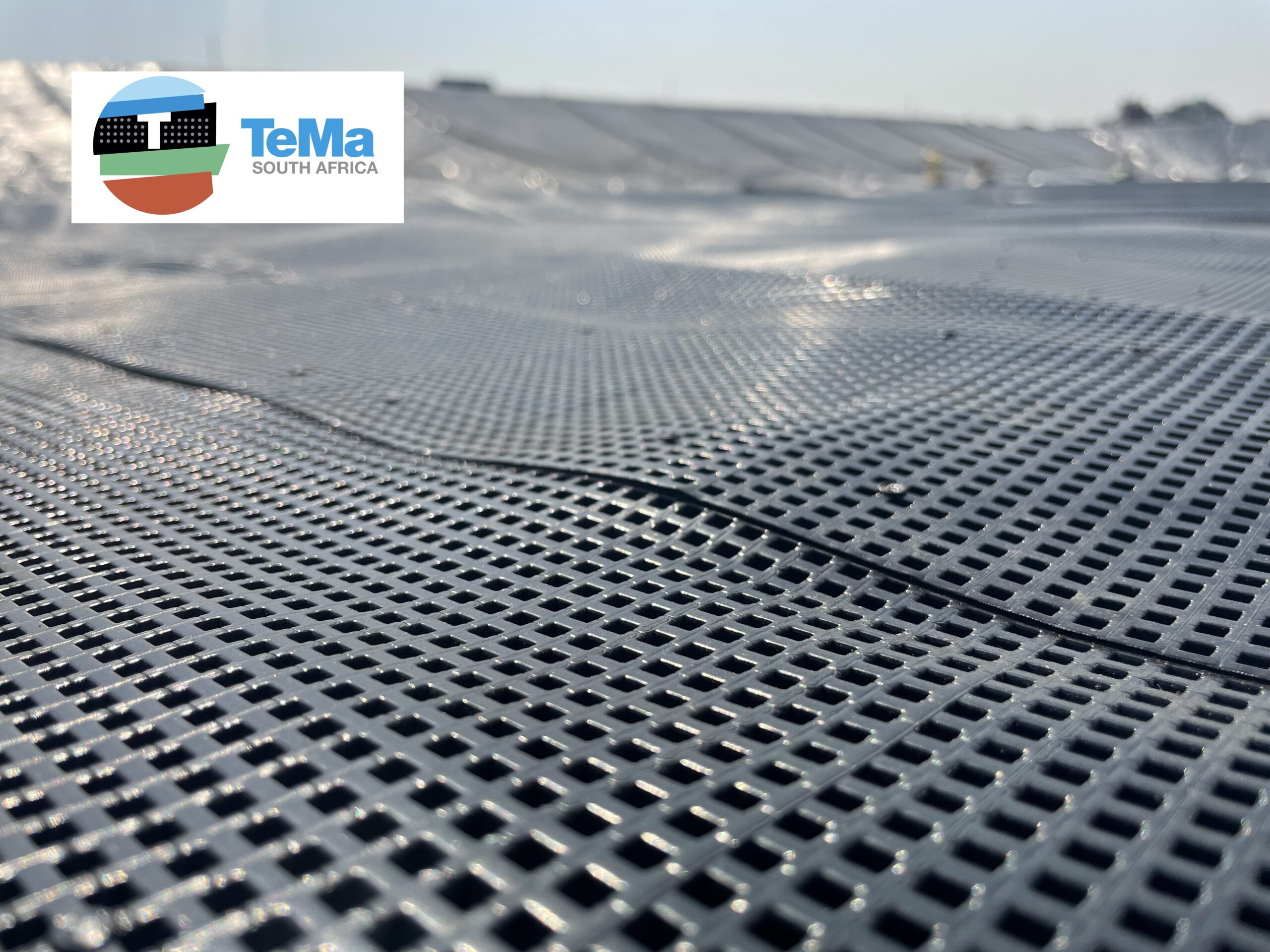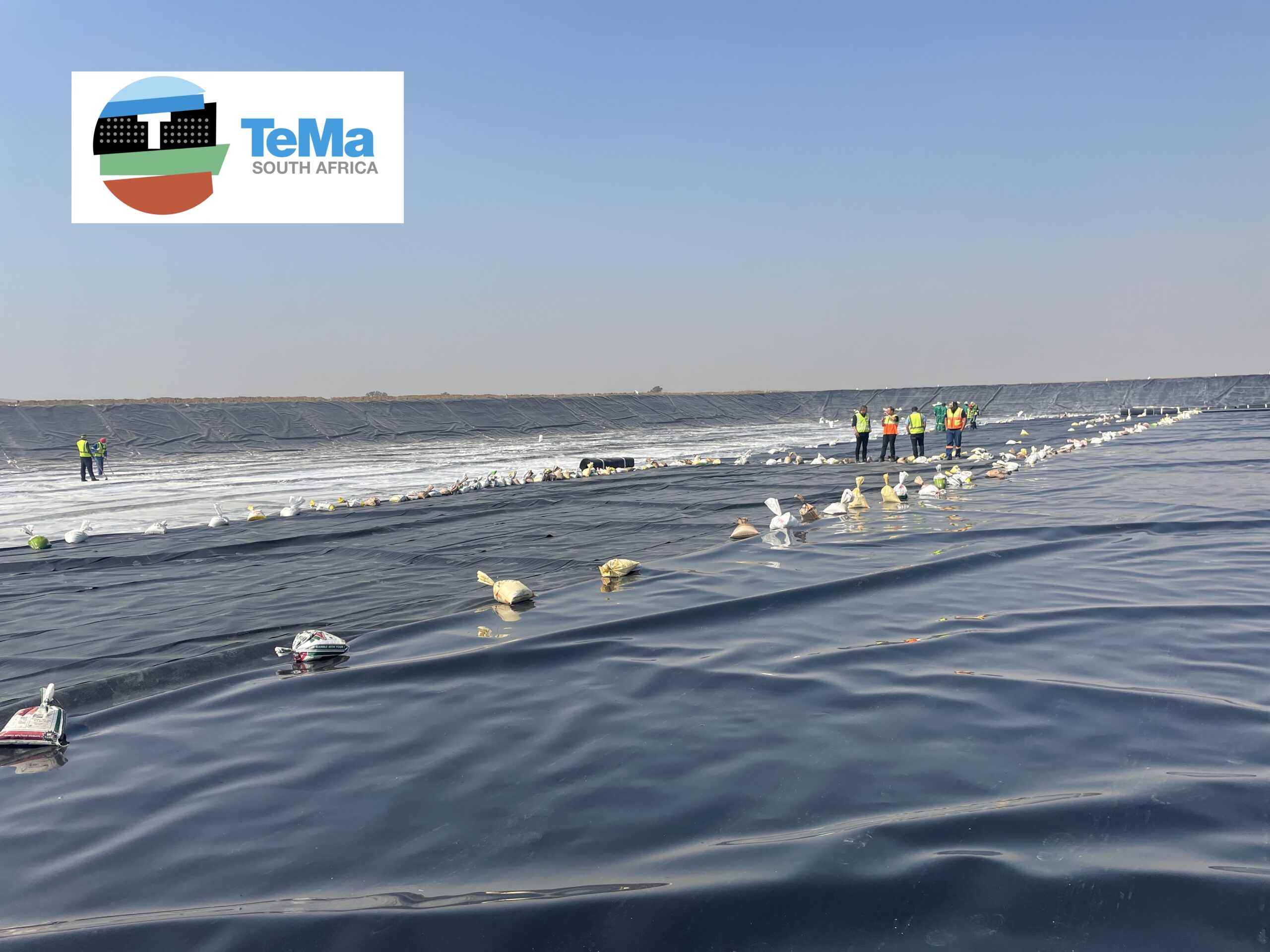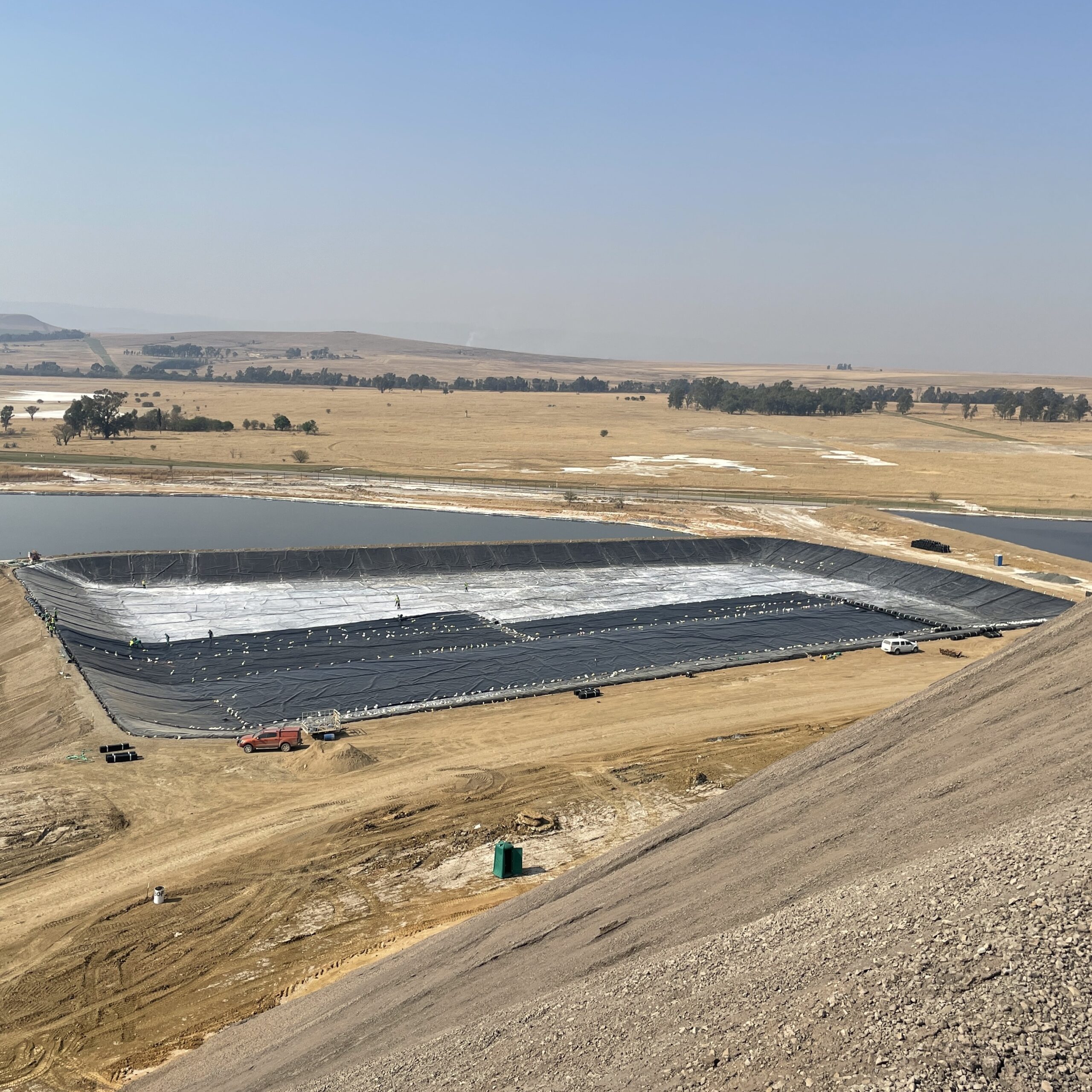
NATURE OF INTERVENTION
Pollution Control Dams are in recent years constructed using complex composite liner systems which in turn need to provide for a number of functions, over and above containment alone.
Designs must take account of leakage detection systems and the adequate failsafe monitoring thereof, as well as the proper and adequate interaction of the various layers within the liner system to ensure overall stability and effectiveness.
Historically, these lining systems have incorporated a combination of polymer liners together with the use of a wide range of natural granular materials to fulfill the various functions. These have often proved to be cumbersome to install, expensive and difficult to procure and not very effective over the long-term period.
Through the introduction of various Geosynthetics products, to replace conventional construction materials, durability, cost and performance of composite liner systems has greatly improved leading to lower maintenance requirements and improved efficiencies over extended design and operational lifespans.
SOLUTION
MD-Drain 4 42, TeMa’s high strength, high flow, Polyolefin-based cuspated drainage core was placed down the side slopes and along the floor area, between the secondary and primary geomembrane liners, as a leakage detection layer. This layer fell to a collection sump, integrated into the floor and exited to a monitoring manhole.
The layer aimed to collect any leaked content liquids form above the liner and alert operators to the potential leak. It also aimed to collect any gas or ground water penetrating the lower liner and to alleviate this pressure thus avoiding ”hippos”.

